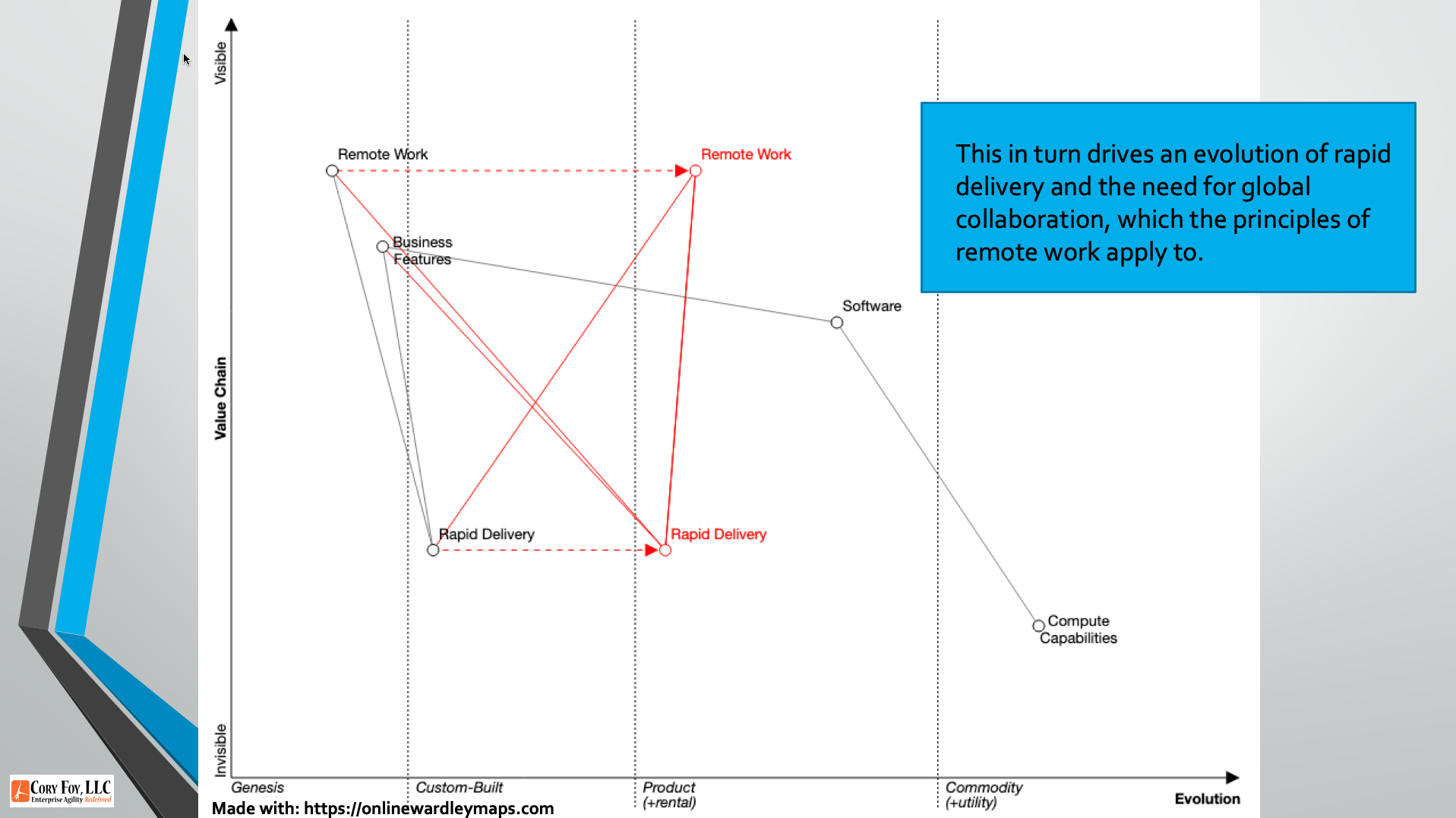Happy Mapping Monday! Today’s #mappingmondays video shows the final part in the series of how we can use Wardley Mapping for identifying value and target markets as part of April Dunford’s Product Positioning Framework from the book Obviously Awesome. If you’re interested in finding out how to apply this to your organization, don’t hesitate to reach out via Twitter or email hello at coryfoy dot com!
Links:
- Obviously Awesome Book
- April Dunford’s Website
- Unique Attributes Mapping Mondays Video
- Competitive Alternatives Mapping Mondays Video
Transcript:
Happy Monday! I’m Cory Foy, and in this week’s Mapping Monday I want to finish off a series on using Wardley Mapping and the Product Positioning Framework to find the best ways to position your product to your customers.
So far we’ve covered four of the five plus one components of product positioning. So now it’s time to look at our last grouping – Market Category and Relevant Trends. These are incredibly powerful and important because they help our customers map their internal models to what our product does and understand why it’s important to them. But what does that mean?
Well, in previous videos we’ve talked about looking at Competitive Alternatives to your product – shown here as comparing our Bug Tracking Tool to a Spreadsheet, as well as diving into the Unique Attributes of our product, and comparing those to our competitors. But that’s not what we want our customers to have to do. We want them to be able to rapidly identify with our product – to “get it” from the start.
The fifth component in Dunford’s framework is Market Categories. I briefly explained earlier how they help customers use what they know – their internal mental models – to figure out what they don’t – what our product is. But that also means that if they’re not doing mapping like we did earlier, then they are making assumptions. And if we’re not careful, those assumptions can lead to negative experiences, since customers will have expectations about what our product is in relation to the market.
As an example, throughout this series we’ve declared ourselves as a bug tracking tool. If we run with that as our market category, customers are immediately going to put us in a very specific box. They likely have experience with Jira, or Trello, or Service Desk, or many other products. They’re going to expect certain features like reporting and integration. They’re going to expect certain pricing models. And they’re going to be frustrated if your product doesn’t follow the market leader.
But, one of the other exercises we did was determining our target market and the value we give to them. And in this case, it wasn’t about bug tracking, but about coordination and collaboration. Yes, tracking work was important, but it wasn’t the critical element.
So maybe instead of a Bug Tracking Tool, we market ourselves as Team Coordination Software. It allows us to rapidly have people understand our focus area – teams that need to coordinate work – while also sidestepping us from the crowded Bug Tracking market. However, we may want to find other competitors labeling themselves in this market and map out their streams to understand how we’ll fit in to assumptions customers may have.
Market Categories give us the power of assumptions. But next we need the power of action. And in this case we can create a deadly combination with Wardley Maps and the Product Positioning concept of Relevant Trends. Here we’re helping customers understand why they need to make this shift now – so they aren’t left behind.
For example, software development used to be a somewhat stable process. We owned and built the software, and we often owned and possibly built the compute power the software ran on. So we controlled the pace of delivery and the structure of teams.
But compute power has shifted towards being a utility, and software increasingly relies on building parts from off the shelf or open source components. This has an underlying effect on the components that rely on it.
Because now the notion of rapid delivery is more critical, and being able to effectively coordinate and collaborate work across many sites around the globe is becoming the norm. Therefore the principles of remote work apply to how we get things done every day.
We can now show customers these trends, and be able to talk about how the market evolution means that they need better tools for coordination and collaboration that allows them to take advantage of the evolving market. Then you can get them excited for what you have to offer!
So when you have a product, or are thinking about creating one, I’d highly recommend picking up Obviously Awesome and then combining Wardley Mapping and her Product Positioning framework to create some Obviously Awesome insights!
Hope you’ve enjoyed this series! As a reminder I offer free consulting sessions if you want to get started in mapping, and work with organizations across the globe helping them understand and improve their processes and strategies. If you’d like to set up a call, don’t hesitate to reach out on Twitter at @cory_foy or via email at hello at coryfoy dot com. Until next week, stay awesome!
